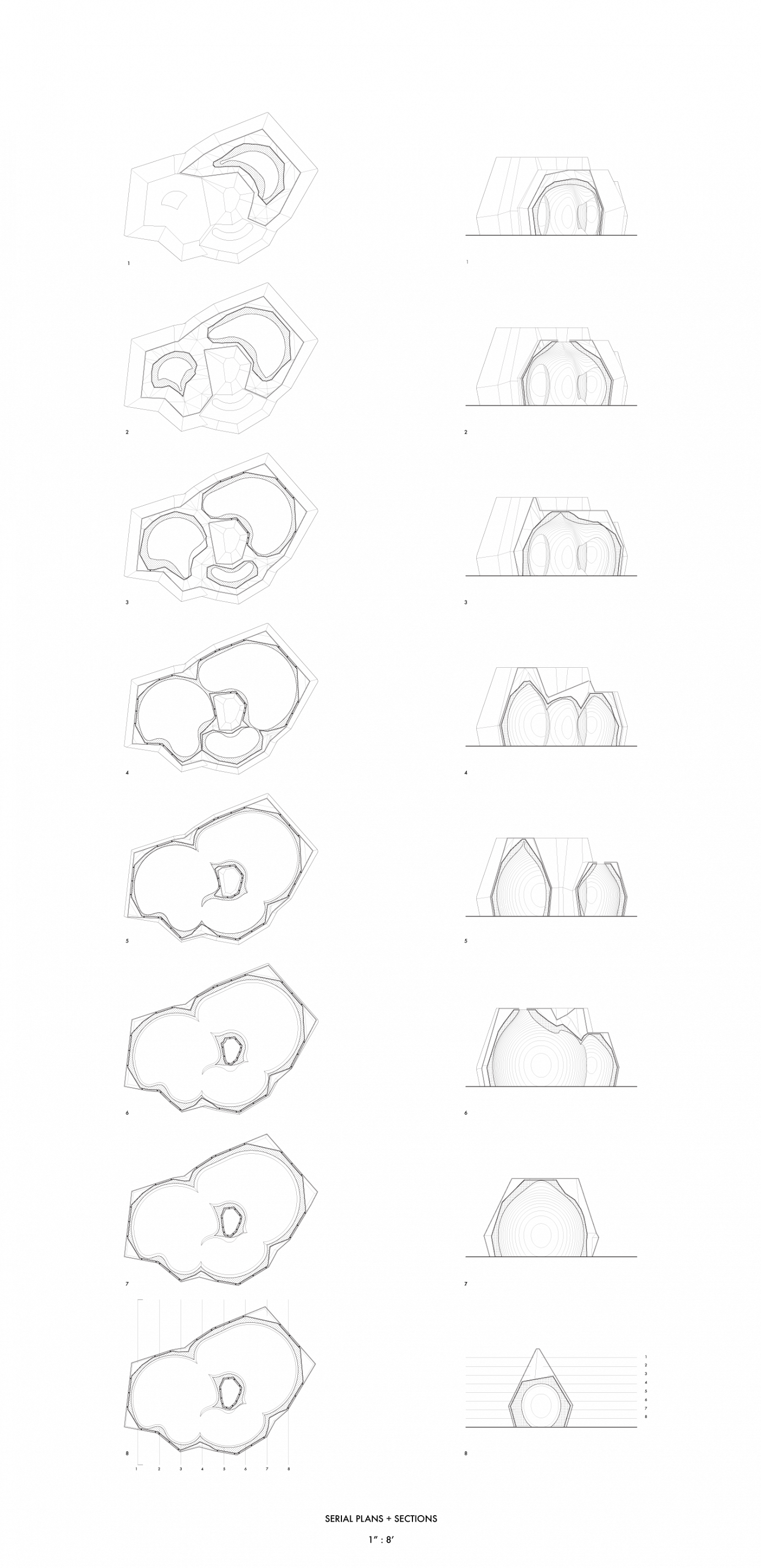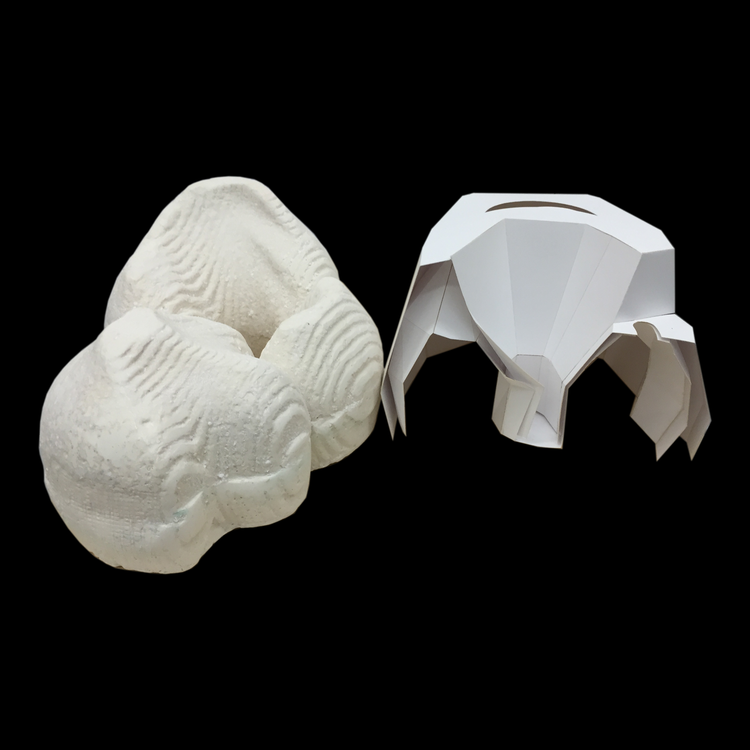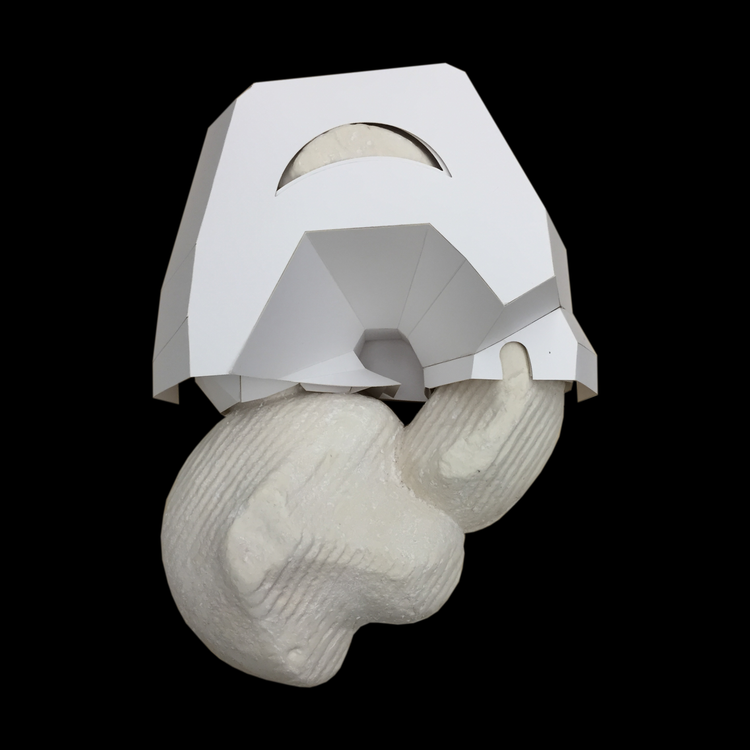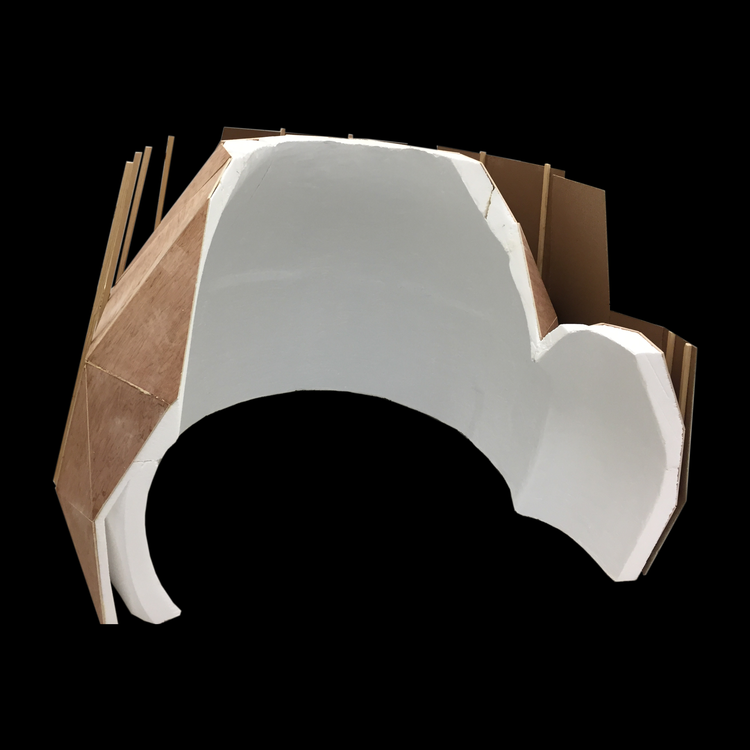





UCLA A.UD Tech II
Winter 2016
Teacher: Gabriel Fries-Briggs
TA: Mark Lagola
Partners: Rasam Aminzadeh,
Mahyar Naghshvar,
Oscar Romero, Josh Seungueon Lee
Our Study of Louis Kahn’s Korman House revealed the interesting generative, structural, and constructional potential of Offsetting as a formal operation. Offsetting was used to generate functional variation of walls - e.g. in differing thicknesses: the production of load-bearing walls and served and servant spaces.
We first began with a meditation on offsetting. Its etymology dates to the 1550s, although its most colloquial understanding, meaning to set off against something else as a counterbalance, dates to the 18th century. This definition gives insight to the principle of offsetting as a productive structural operation, as the counterbalancing of forces to make structures possible. Indeed, historical precedents confirm this. Brickwork bonds such as the stretcher and English bonds are amongst the strongest brickwork bond patterns, and both offset bricks at the joints. Engaged columns are offsets of a wall used for structural and load bearing purposes. Moreover, offsetting can produce variable wall sections through the production of variable wall thicknesses, influencing poche and allowing for the production of wall cavities.
We proceeded to closely examine the properties of offsetting and the kinds of outcomes it produces and generated a typology of offsets of different techniques, their outcomes, and their potential functional uses. What primarily interested us was the potential of offsetting to transform curves into straight lines, as this led to the production of a curve both distinct yet dependent and derived from its parent. We were interested in offsetting inwards, outwards, and then offsetting those new curves; the intersections, problems and solutions this offered were prspective for our thinking of a system of wall- construction, and between material properties, how offsetting from a material (such as foam) capable of curves into sheet materials incapable of them.
The project, then, proceeded by abstracting a set of curves from the Korman House plan which served as our canvas for the application of our studies. These curves served as the basis for our interior plan developed inside-out from these original curves. By offsetting, we generated walls that structure and make possible our inverted catenary curves using stereometric principles. Different types of offsetting enabled changes in geometry, materials, and structure, and compressive mass was arranged both tectonically and stereometrically. Moreover, offsetting allows us to develop walls in such a way that was pragmatic and took into account the practical considerations that dictate the construction of conventional walls. Thus offsetting gave rise to the important layers used in wall construction: insulation, servant spaces, air gaps, and cladding. We thus derive a typical wall from purely offsetting materials.